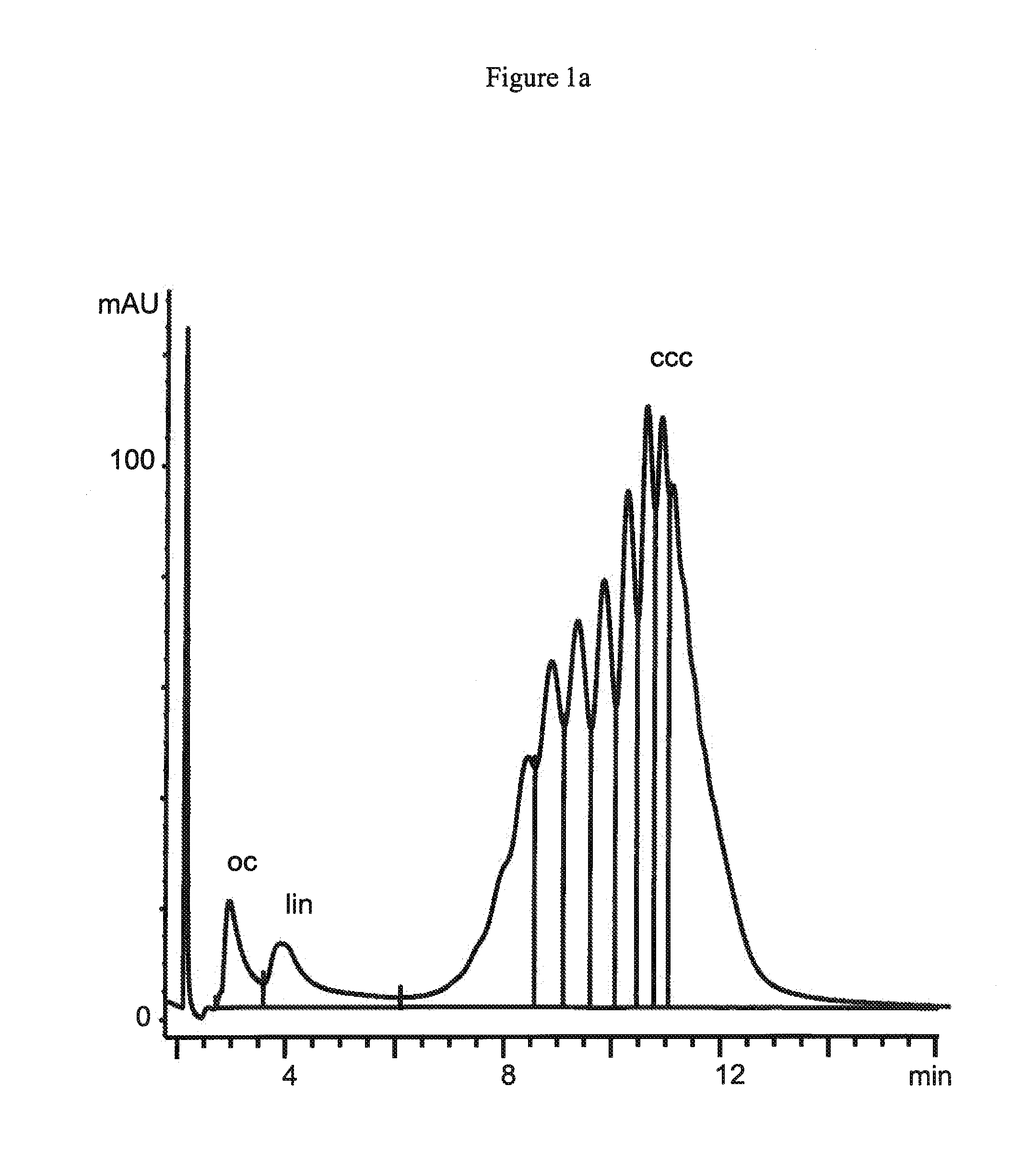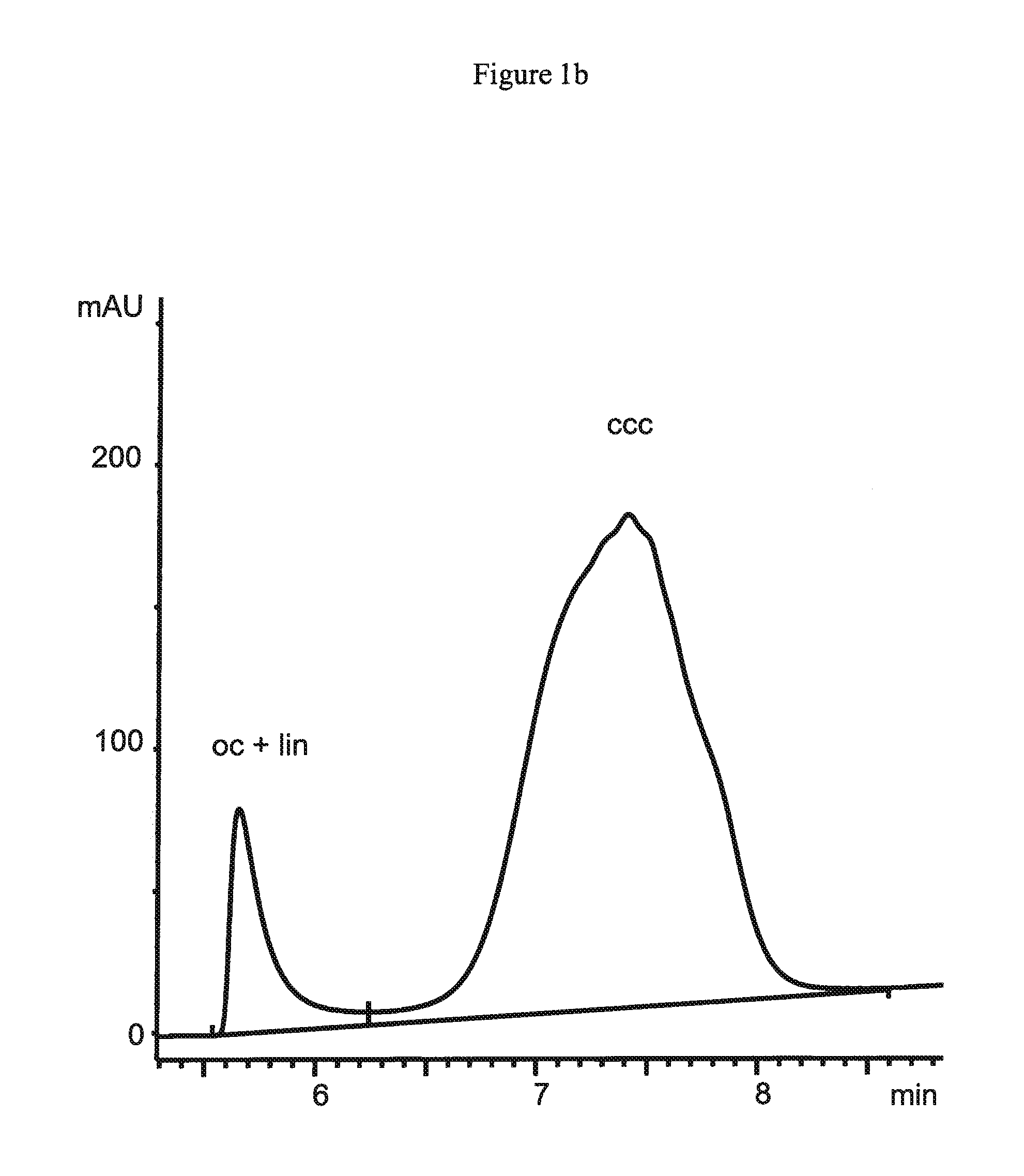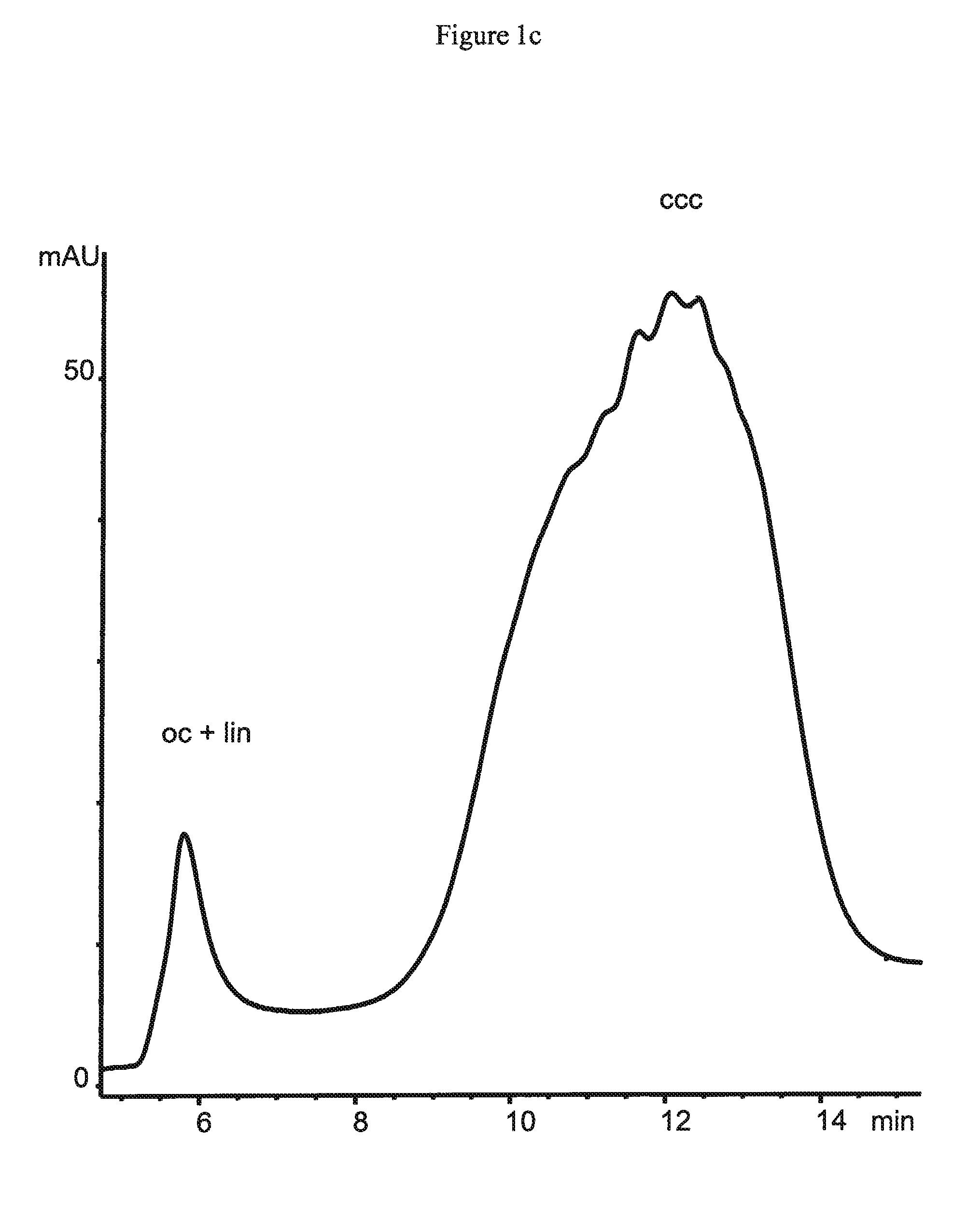Liquid phase separation of plasmid DNA isoforms and topoisomers
a technology of plasmid dna and liquid phase separation, which is applied in the direction of separation process, sugar derivate, organic chemistry, etc., can solve the problems of cumulated salts' disposal being very expensive, suffering from relatively low separation efficiency, and overall suffering from low robustness
- Summary
- Abstract
- Description
- Claims
- Application Information
AI Technical Summary
Benefits of technology
Problems solved by technology
Method used
Image
Examples
example 1
Scheme for Synthesis of a Ligand and Coupling to a Solid Matrix
[0163]Scheme 1: 980 mg (5 mmol) of (R)-(−)-1-Benzyl-3-hydroxypiperidine (Sigma Aldrich) are transferred into a three-necked round bottom flask and dissolved in 15 ml dichloromethane. The apparatus is flushed with nitrogen, and 502 μl (5.7 mmol, 1.15 eq.) allylisocyanate (Fluka) together with 3 μl (5 μmol) dibutyltindilaurate (Aldrich) as a catalyst are added to the mixture. The yellowish solution is refluxed 3 hours and the reaction progress is monitored by tlc (dichloromethane: methanol=20:1). After flash silica column chromatography using dichloromethane:methanol=25:1 as eluent, the product, 3-(allylcarbamoyloxy)-N-benzylpiperidine, is isolated in 58% yield. 3-mercaptopropyl-modified silica matrix (or support) is produced from bare 5 μm spherical silica (30 g, Daiso, Japan) and 3-mercaptopropyl-methyldimethoxysilane (8.6 ml) by refluxing in dry toluene in the presence of 4-dimethylaminopyridine (57 mg, Fluka) for 7 hou...
example 2
Impact of the Linker's Length on the Recovery of Plasmid Isoforms
[0167]Two solid supports for chromatography are synthesized bearing quinine-carbamate ligands, onto one of which the ligand is anchored via a short linker to the matrix (triethoxysilyl-activated propylcarbamoylquinine on bare silica, structure b), and onto the other matrix via a long linker (9-allylcarbamoyl-10,11-dihydroquinine on 3-mercaptopropyl-modified silica, see structure c). The support with the long linker is synthesized according to Example 1, Scheme 1, starting from 10,11-dihydroquinine (Buchler, Germany) and allylisocyanate (Sigma Aldrich) in 95% yield and attached to endcapped 3-mercaptopropyl-modified silica. The ligand density according to the elemental analysis (14.01% C, 2.18% H, 1.38% N, and 1.90% S) is 318 μmol / g.
[0168]For the production of the matrix bearing the short linked ligand, 3-isocyanatopropyl-triethoxysilane (1 mol eq.) and quinine (1.05 mol eq.) are refluxed in methanol to yield the carbam...
example 3
Impact of the Matrix Morphology on the Separation of pDNA Isoforms and Topoisomers
[0172]A tert-butylcarbamoylquinine ligand synthesized from tert-butylisocyanate and quinine in accordance to the procedure as described in Example 2 is attached via 3-mercaptopropylsilane activated support to 1.5 μm non-porous silica particles (obtained from Micra Scientific Inc., USA), to 10 μm porous silica particles (obtained from Daiso Co, Ltd., Japan) and a silica monolith Chromolith™ (obtained from Merck, Germany) containing 2 μm macropores. These supports have specific surface areas of 3 m2 / g for the 1.5 μm particles and 300 m2 / g for the 10 μm particles and the monolith, respectively. 1.5 μm non-porous silica particles are packed into a 50×4.6 mm column by Bischoff Chromatography (Germany), while the 10 μm particles are packed in-house at a pressure of 600 bar into a 150×4.0 mm column. The chromatographic equipment as well as the employed chromatographic conditions are disclosed in Example 2.
[01...
PUM
| Property | Measurement | Unit |
|---|---|---|
| molecular weight | aaaaa | aaaaa |
| molecular weight | aaaaa | aaaaa |
| molecular weight | aaaaa | aaaaa |
Abstract
Description
Claims
Application Information
 Login to View More
Login to View More - R&D
- Intellectual Property
- Life Sciences
- Materials
- Tech Scout
- Unparalleled Data Quality
- Higher Quality Content
- 60% Fewer Hallucinations
Browse by: Latest US Patents, China's latest patents, Technical Efficacy Thesaurus, Application Domain, Technology Topic, Popular Technical Reports.
© 2025 PatSnap. All rights reserved.Legal|Privacy policy|Modern Slavery Act Transparency Statement|Sitemap|About US| Contact US: help@patsnap.com



